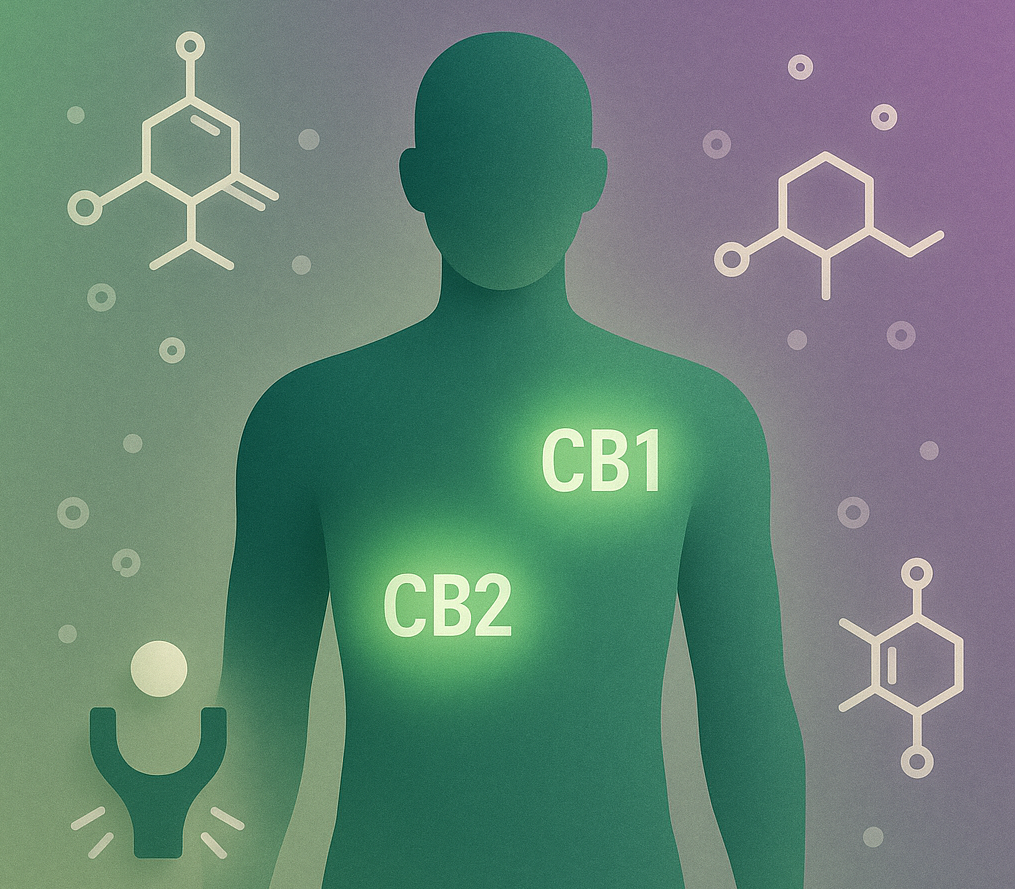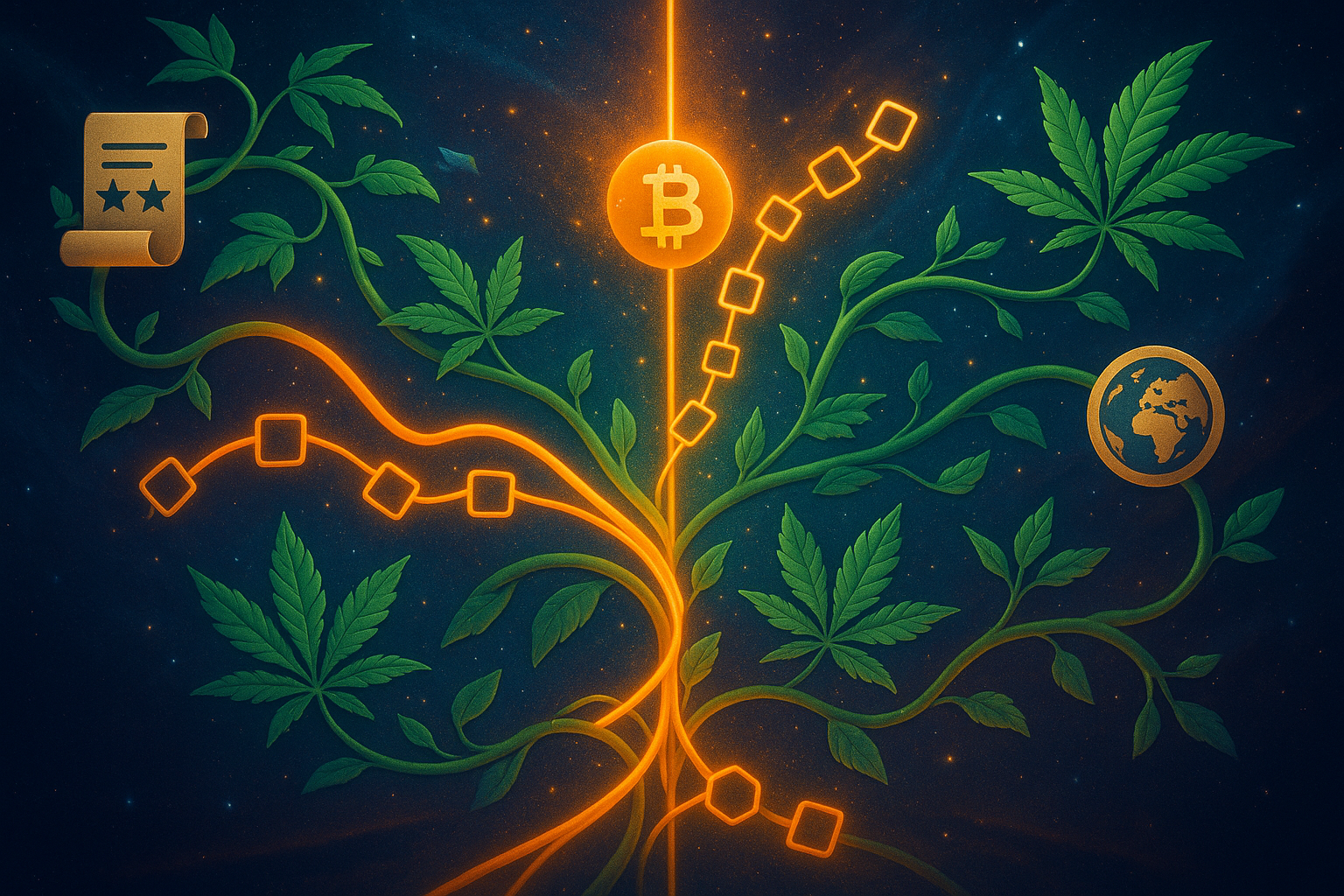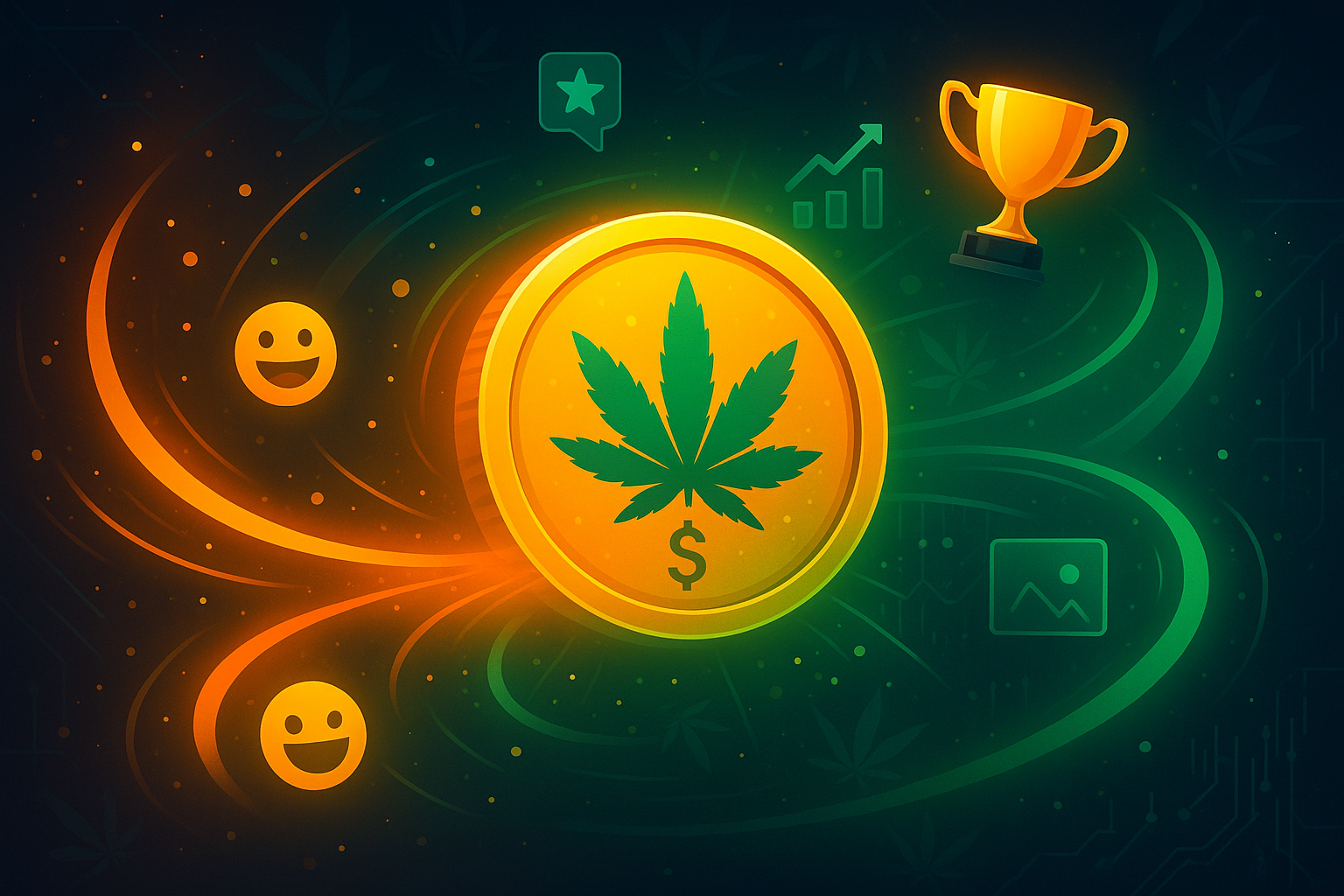The Endocannabinoid System: How Medical Marijuana Interacts with Your Body
The Science Behind Weed’s Therapeutic Effects
The endocannabinoid system (ECS) is a fascinating biological network that plays a key role in how medical marijuana works in the body. At Weedcoin, we’re passionate about the science of cannabis, and the MediWeed Hub is here to explain the ECS and its connection to weed with irie vibes. In this article, we’ll dive deep into what the ECS is, how it functions, how cannabinoids like THC and CBD interact with it, and why it’s crucial for medical marijuana’s therapeutic effects. Understanding the ECS can help you make the most of medical weed—let’s explore this incredible system!

The endocannabinoid system (ECS) is a complex cell-signaling network found in all mammals, discovered in the 1990s during research into THC’s effects. The ECS regulates a wide range of physiological processes, including pain, mood, appetite, sleep, immune function, and stress response, maintaining homeostasis—or balance—in the body. It consists of three main components: endocannabinoids (natural cannabis-like compounds produced by the body), receptors (CB1 and CB2), and enzymes that synthesize and break down endocannabinoids. The two primary endocannabinoids are anandamide (often called the “bliss molecule”) and 2-AG (2-arachidonoylglycerol), which bind to CB1 and CB2 receptors to signal the body to respond to imbalances (NIDA).
CB1 receptors are primarily located in the brain and central nervous system, influencing functions like pain perception, mood, and appetite. THC, the psychoactive cannabinoid in marijuana, mimics anandamide by binding directly to CB1 receptors, producing effects like euphoria, pain relief, and increased hunger. This is why THC is effective for conditions like chronic pain and chemotherapy-induced nausea—by activating CB1 receptors, it dulls pain signals and suppresses nausea in the brain’s vomiting center. A 2016 study in Pain found that THC reduced pain intensity by 30% in patients with neuropathic pain, highlighting its role in CB1-mediated relief (Mayo Clinic). However, overactivation of CB1 receptors with high THC doses can lead to side effects like anxiety or paranoia, emphasizing the need for careful dosing.
CB2 receptors, found mostly in the immune system and peripheral tissues, play a key role in inflammation and immune response. CBD, a non-psychoactive cannabinoid, doesn’t bind directly to CB2 receptors but influences them indirectly by inhibiting the enzyme FAAH (fatty acid amide hydrolase), which breaks down anandamide. This increases anandamide levels, enhancing the body’s natural pain-relieving and anti-inflammatory responses. CBD also interacts with other receptors, such as TRPV1 (involved in pain and temperature regulation) and 5-HT1A (serotonin receptors, for mood and anxiety), making it effective for conditions like epilepsy and anxiety. A 2019 study in The Journal of Clinical Psychiatry found that CBD reduced anxiety in 79% of participants, likely through its effects on the ECS and serotonin pathways (Harvard Health).
The ECS’s role in homeostasis explains why medical marijuana can treat such a wide range of conditions. For example, in patients with multiple sclerosis, the ECS may be underactive, leading to increased spasticity and inflammation. Cannabis compensates by providing external cannabinoids (phytocannabinoids) like THC and CBD, which activate CB1 and CB2 receptors to reduce muscle stiffness and inflammation, as seen in the effectiveness of Sativex, a THC-CBD spray approved in Europe (Mayo Clinic). Similarly, in cancer patients, the ECS helps regulate nausea and appetite, and THC boosts this system to alleviate chemotherapy side effects, while CBD reduces associated anxiety, creating a holistic therapeutic effect.
The ECS also interacts with terpenes, the aromatic compounds in cannabis, to enhance its effects through the entourage effect. For instance, the terpene beta-caryophyllene directly activates CB2 receptors, reducing inflammation and pain without psychoactivity, as noted in a 2013 study in The British Journal of Pharmacology. This synergy allows patients to choose strains that target specific symptoms—strains high in beta-caryophyllene, like Girl Scout Cookies, may be particularly effective for inflammatory conditions, while those with linalool, like Lavender, can enhance anxiety relief. The ECS’s adaptability makes it a powerful target for medical marijuana, but individual responses vary due to factors like genetics, ECS tone (baseline activity), and tolerance, requiring personalized treatment plans.
Practical applications of medical marijuana through the ECS involve understanding how to balance THC and CBD for optimal effects. For pain, a strain with a 1:1 THC:CBD ratio can activate CB1 for pain relief while using CBD to temper THC’s psychoactivity, reducing side effects like anxiety. For inflammation-driven conditions like arthritis, CBD-heavy strains can boost CB2 activity, while also reducing inflammation via non-ECS pathways like PPAR-gamma receptors. Patients should start with low doses—such as 2.5 mg THC or 5 mg CBD—and monitor their response, as overstimulating the ECS can lead to tolerance or diminished effects over time. Lifestyle factors like diet and exercise can also support the ECS—omega-3 fatty acids, found in fish and flaxseed, increase endocannabinoid production, enhancing cannabis’s benefits (Harvard Health).
Practical Tips
- Target Specific Receptors: Choose CBD-heavy strains like ACDC to boost CB2 activity for inflammation, or THC-dominant strains like OG Kush for CB1-mediated nausea relief.
- Balance THC and CBD: Use a 1:1 THC:CBD strain like Cannatonic for pain relief with reduced psychoactivity, starting with 2.5 mg of each.
- Target Specific Receptors: Choose CBD-heavy strains like ACDC to boost CB2 activity for inflammation, or THC-dominant strains like OG Kush for CB1-mediated nausea relief.
- Enhance with Terpenes: Select strains with beta-caryophyllene (e.g., Girl Scout Cookies) for inflammation, or linalool (e.g., Lavender) for anxiety, to amplify ECS effects.
- Support Your ECS Naturally: Incorporate omega-3-rich foods (e.g., salmon, flaxseed) into your diet to boost endocannabinoid production and enhance cannabis’s benefits.
- Monitor and Adjust: Track your response to cannabis in a journal, noting dosage and effects, and consult a doctor to avoid ECS overstimulation or tolerance.
Key Takeaways
- The endocannabinoid system (ECS) regulates pain, mood, appetite, and inflammation through endocannabinoids, CB1/CB2 receptors, and enzymes.
- THC activates CB1 receptors to relieve pain and nausea, while CBD boosts anandamide levels and influences CB2 for anti-inflammatory effects.
- CBD reduces anxiety and seizures via serotonin and TRPV1 receptors, complementing its ECS interactions, as seen in treatments like Epidiolex.
- The ECS explains cannabis’s versatility—THC-CBD combinations treat spasticity in MS, while terpenes like beta-caryophyllene enhance anti-inflammatory effects.
- Personalized dosing and strain selection are key to optimizing ECS benefits, supported by lifestyle factors like a healthy diet.













